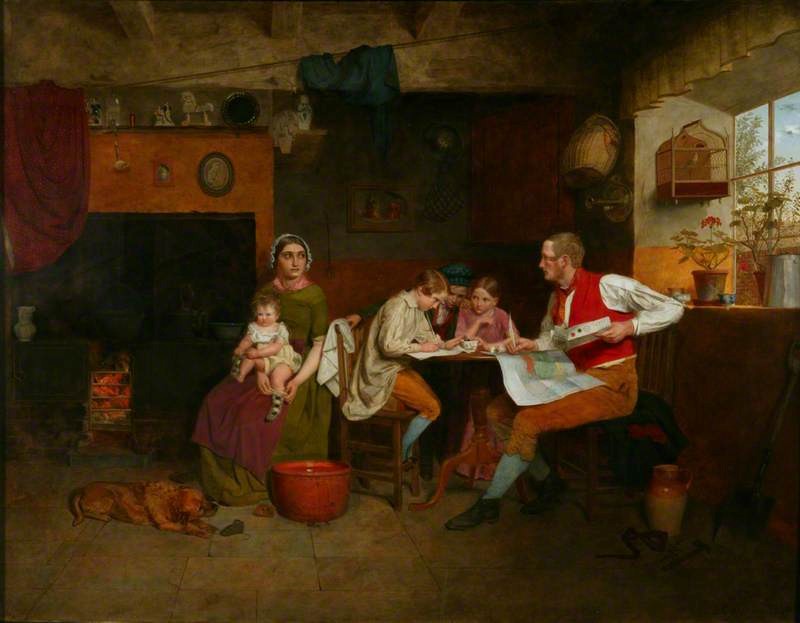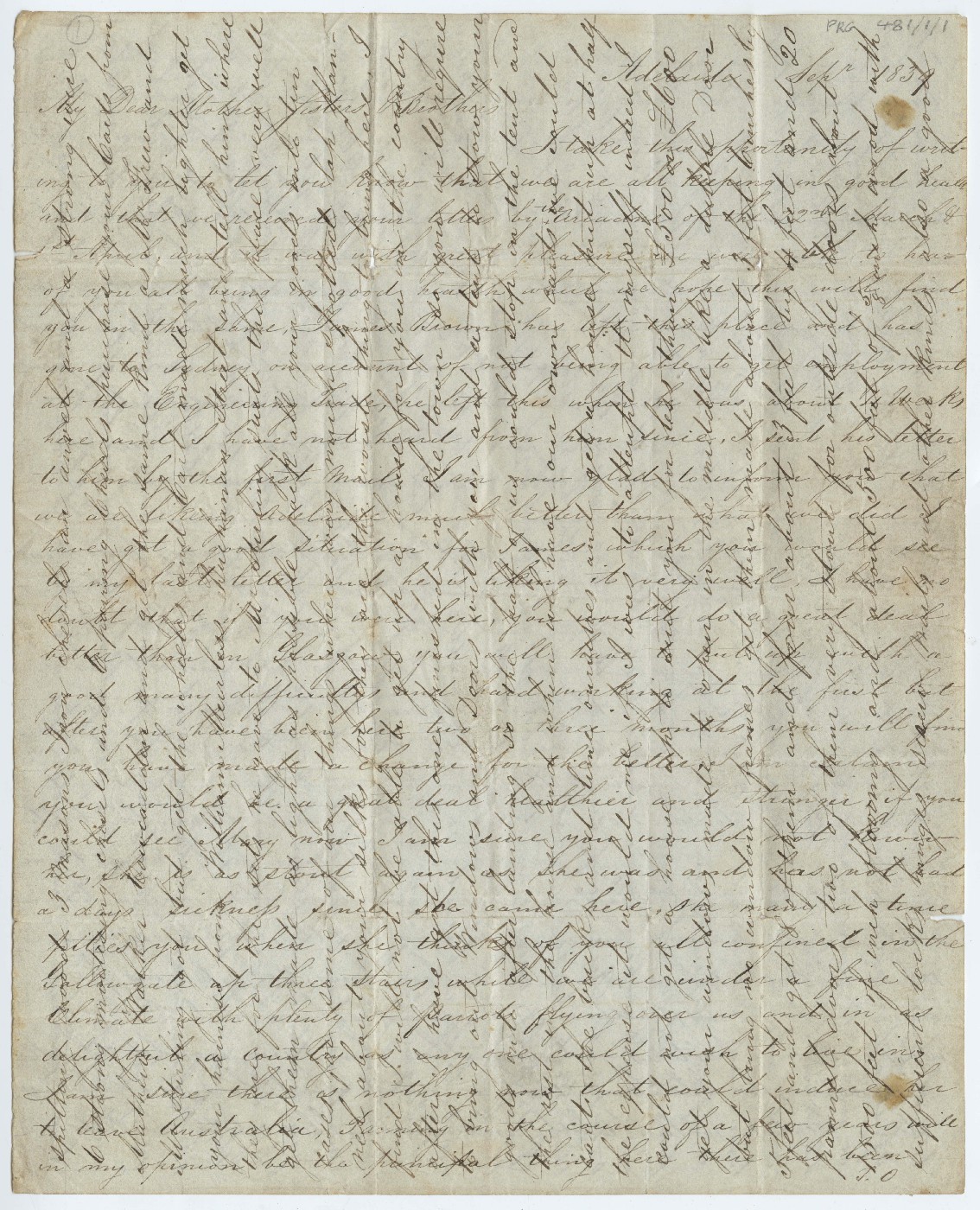Letters
RESCHEDULED TO TUESDAY, 12 NOVEMBER, 14.00-16.00 Rm A0.01 Zeeman Building (Maths & Stats).
Letter-writing was a crucial form of communication in the nineteenth century, in a context of imperial expansion and large-scale emigration where families were increasingly divided by vast distances. From the historian’s perspective, letters are crucial sources which can help us to reconstruct the lives of nineteenth-century subjects. Yet, letters do not necessarily offer a transparent window into the past. In this session, we will discuss how and why letters were written and what they might reveal, as well as exploring the potential limits of letters as a historical source.
Presenters — Nicholas Broome, Ellie Muldoon and Tasnim Chowdhury
Seminar Questions
- How did a reliance on letters shape the relationships between distant friends and family members?
- What do letters tell us about family dynamics in the nineteenth century?
What devices did letter-writers use to try to maintain intimate relationships across vast distances? - In what ways might letters have helped to sustain imperial power?
- To what extent and in what ways did colonial subjects appropriate European letter-writing practices for their own purposes?
- As historians, what can letters tell us about historical actors? What limitations might they have?
- What should we take into consideration when using letters as a source?
Essential Reading
Choose 2 of the following 3 secondary sources.
- Errington, Elizabeth Jane. ‘Transatlantic Webs of Kin and Community’. In Emigrant Worlds and Transatlantic Communities: Migration to Upper Canada in the First Half of the Nineteenth Century. Montreal: McGill-Queen’s University Press, 2007.
- Van Toorn, Penny. Writing Never Arrives Naked: Early Aboriginal Cultures of Writing in Australia. Canberra: Aboriginal Studies Press, 2006. Chapter 3.
- Breckenridge, Keith. ‘Love Letters and Amanuenses: Beginning the Cultural History of the Working Class Private Sphere in Southern Africa, 1900-1933’. Journal of Southern African Studies 26, no. 2 (2000): 337-348.
Primary Source
Using the Migration to New Worlds database, choose a collection of emigrant correspondence and read at least three letters.
- To do so, click the ‘Documents’ link just beneath the header, then click the ‘Permanent Settlement and Successive Generations’ button. Select ‘Correspondence’ from the Document Type menu on the left, and then click ‘Apply’ to apply the filter.
- Try to identify patterns in the language of the letters and topics of discussion; don’t worry if you struggle to read nineteenth-century handwriting, just do your best!
Further Reading
- Barber, Karin. Africa’s Hidden Histories: Everyday Literacy and the Making of the Self. Bloomington, IND: Indiana University Press, 2006. Introduction.
- Buettner, Elizabeth. Empire Families: Britons and Late Imperial India. Oxford: Oxford University Press, 2004. Especially chapter 3.
- Elliott, Bruce S., David A. Gerber, and Suzanne M. Sinke, eds., Letters Across Borders: The Epistolary Practices of International Migrants. Basingstoke: Palgrave Macmillan, 2006.
- Frost, Mark. ‘Pandora’s Post Box: Empire and Information in British India, 1854-1914’. English Historical Review 131, no. 552 (2016): 1043-1079.
- Gerber, David A. Authors of their Lives: The Personal Correspondence of British Immigrants to North America in the Nineteenth Century. New York: New York University Press, 2006.
- Gerber, David. ‘Acts of Deceiving and Withholding in Immigrant Letters: Personal Identity and Self-Presentation in Personal Correspondence.’ Journal of Social History 39, no. 2 (2005): 315-330.
- Hall, Nigel. ‘The Materiality of Letter Writing: A Nineteenth Century Perspective’. In Letter Writing as a Social Practice, edited by David Barton and Nigel Hall. Philadelphia: John Benjamins Pub, 2000.
- Laidlaw, Zoe. Colonial Connections 1815-1845: Patronage, the Information Revolution and Colonial Government. Manchester: Manchester University Press, 2005.
- McDonald, Charlotte. ‘Intimacy of the Envelope: Fiction, Commerce, and Empire in the Correspondence of Friends Mary Taylor and Charlotte Bronte, c. 1845-55’. In Moving Subjects: Gender, Mobility, and Intimacy in the Age of Empire, edited by Antoinette Burton and Tony Ballantyne. Urbana, ILL: Illinois University Press, 2009.
- Rappaport, Erika. ‘“The Bombay Debt”: Letter Writing, Domestic Economies and Family Conflict in Colonial India’. Gender and History 16, no. 2 (2004): 233-60.
- Smith, Kate. ‘Imperial Families: Women Writing Home in Georgian Britain’. Women’s History Review 24, no. 6 (2015): 843-860.
- Van Sittert, Lance. ‘Begging Letters: Tin Trunk Literacy and the Empathy Economy of Tristan da Cunha, c. 1909-39’, Journal of Imperial and Commonwealth History 44, no. 2 (2016): 263-287.


